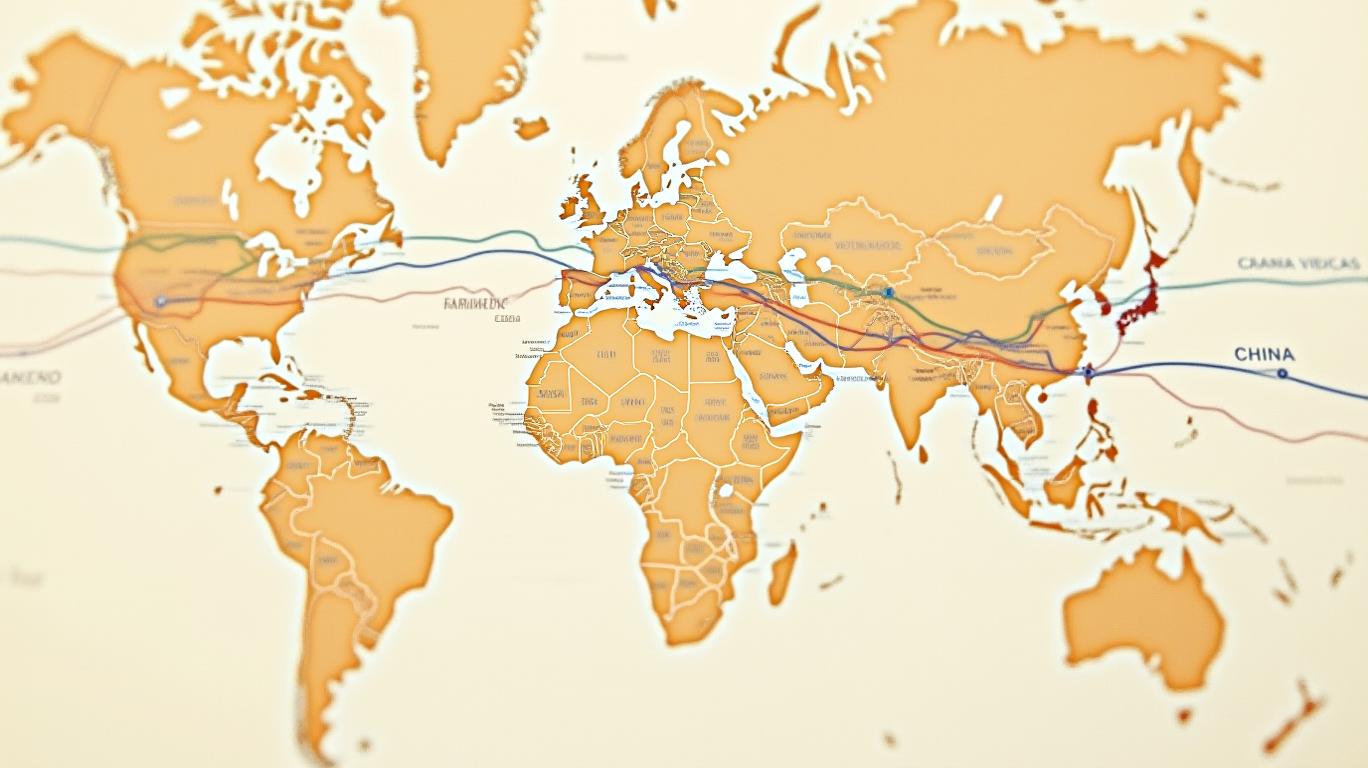US-China Tariff Truce Sparks Sector Rotation: Navigating Near-Term Gains and Strategic Risks
The 90-day tariff truce between the United States and China, announced in May 2025, has injected a rare dose of optimism into global markets. With tariffs on bilateral trade slashed from exorbitant highs—145% for the U.S. and 125% for China—to more manageable levels, investors now face a critical question: Where should capital flow to capitalize on this temporary détente?
Ask Aime: "Capital to flow where? US-China tariff truce benefit?"
The answer lies in sector rotation. The truce has created a window of opportunity for industries shackled by years of trade friction, while also exposing vulnerabilities in sectors still entangled in geopolitical crosshairs. For investors, the key is to pivot toward companies positioned to benefit from reduced trade barriers while avoiding those exposed to unresolved risks.
Tech and Semiconductors: A Delicate Rebound
The semiconductor sector—central to both nations’ manufacturing and tech ambitions—stands at the intersection of hope and caution. U.S. tariffs on Chinese-made semiconductors have been reduced, potentially easing supply chain bottlenecks for firms like Taiwan Semiconductor Manufacturing (TSM) and Applied Materials (AMAT), which rely on cross-border production.
Ask Aime: "Which tech and semiconductors will benefit from the U.S.-China tariff truce, and how should investors approach these sectors?"
However, China’s export controls on rare earth metals—a critical input for semiconductors—remain in place, complicating production for companies reliant on these materials. Meanwhile, U.S. restrictions on advanced chip exports to China persist, leaving the sector in a precarious balancing act. Investors should favor firms with diversified supply chains or those negotiating direct partnerships with suppliers outside the conflict zone.
Agriculture and Consumer Goods: Immediate Winners
The truce’s broad tariff rollback has breathed life into agricultural and consumer goods sectors. For U.S. farmers, reduced tariffs on soybeans, corn, and pork—previously hit by retaliatory duties—could boost exports to China’s $14 trillion consumer market. Deere (DE) and Cargill stand to benefit, as lower costs could ease input pressures.
In consumer goods, electronics and apparel firms like Nike (NKE) and Coca-Cola (KO) may see margin improvements as tariff costs on Chinese imports drop.

The Chinese Commerce Ministry’s emphasis on “producers and consumers” aligns with this narrative, suggesting near-term gains for companies with strong pricing power to pass savings to consumers or retain margins.
Steel and Pharmaceuticals: The Truce’s Blind Spots
Not all industries are equally insulated. The truce left unresolved tensions in strategic sectors like steel and pharmaceuticals.
- Steel: While reduced tariffs on raw materials may lower costs for U.S. manufacturers, China’s overcapacity and subsidies for its steel industry could reignite dumping concerns post-truce. Investors in firms like U.S. Steel (X) should monitor trade negotiations closely.
- Pharmaceuticals: The U.S. maintained its 20% tariff on Chinese fentanyl-related imports, signaling no letup in the drug war. Companies like Pfizer (PFE) and Moderna (MRNA), which rely on Chinese APIs (active pharmaceutical ingredients), face lingering risks tied to drug trafficking disputes.
A Strategic Playbook for Investors
- Rotate into Tech with Diversification: Prioritize semiconductor firms with R&D partnerships in Taiwan or South Korea, shielding them from bilateral tensions.
- Lock in Agricultural Plays: Buy into commodity producers and logistics firms (e.g., J.B. Hunt Transport (JBHT)) with exposure to China’s demand.
- Avoid Overexposure to “Strategic” Sectors: Steel and pharma stocks may rebound temporarily but face long-term headwinds unless the truce evolves into a broader deal.
The Bottom Line: Act Now, but Stay Nimble
The truce’s 90-day window offers a fleeting chance to capitalize on pent-up demand and supply chain normalization. Investors who act swiftly—targeting sectors with clear tariff relief and pricing power—can secure gains. However, the agreement’s fragility demands vigilance: any breakdown could reverse the rally.
Focus on companies with cross-border exposure and operational agility to pivot as the geopolitical climate shifts. The truce is a starting line, not a finish.
Jeanna Smialek is a globally recognized analyst specializing in macroeconomic trends and geopolitical finance. Her insights blend data-driven rigor with a focus on actionable investment strategies.


_cbf77e8c1748017079428.jpeg)







